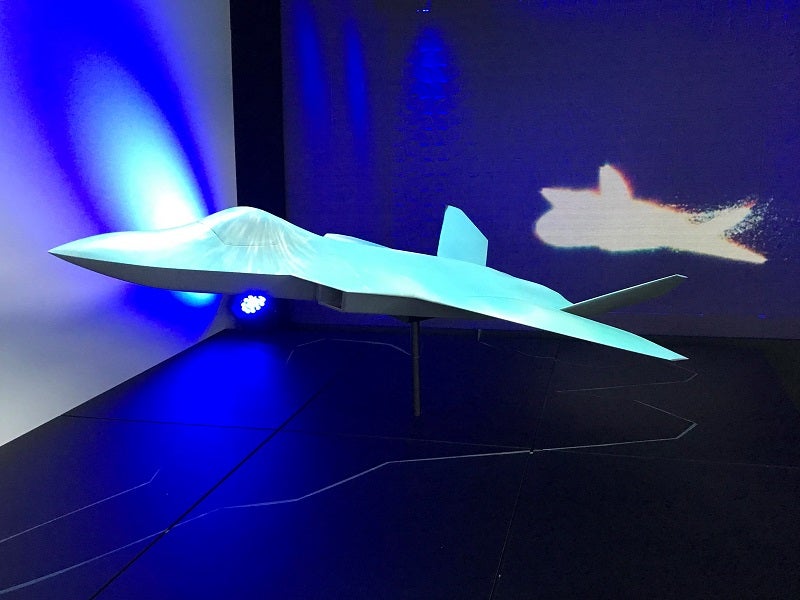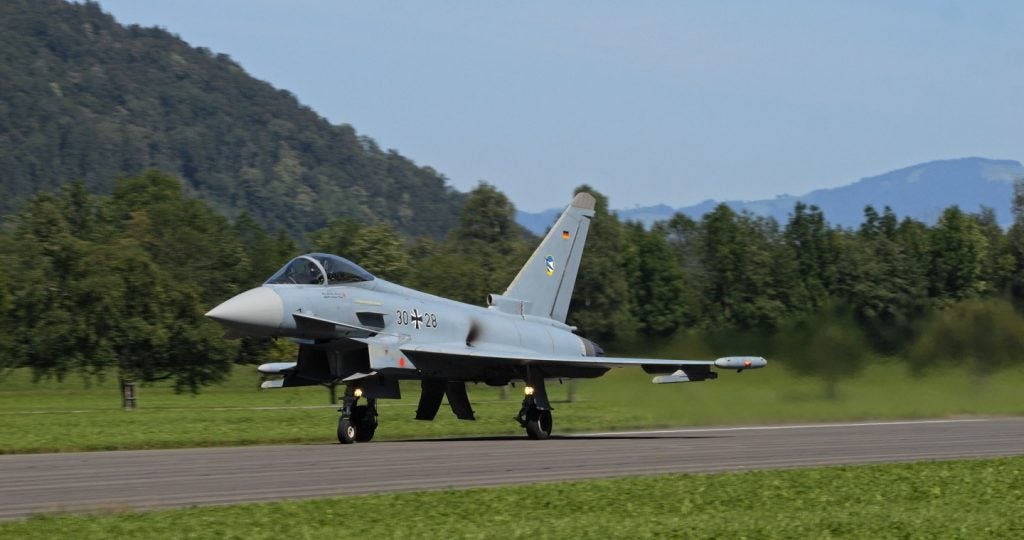
The UK has already begun work on a technology demonstrator aircraft for its landmark Tempest Future Combat Air Systems (FCAS) programme, with a first flight test due within the next five years.
Designed as a sixth-generation stealth combat air platform, Tempest is intended to begin entering service from 2035 and gradually replace the Eurofighter Typhoon fleet. It is not known how many Tempest aircraft are expected to enter service, but it is unlikely to be a one-for-one numerical replacement for the Eurofighter multirole fighter.
Breaking the news of the technology demonstrator aircraft at Farnborough International Air Show on 18 July, senior officials from the UK Ministry of Defence (MoD), BAE Systems, Rolls Royce, Leonardo, and MBDA provided updates as to developments on the programme.
The UK MoD FCAS director, Richard Berthon, told Airforce Technology that a single supersonic demonstrator aircraft will be manufactured for the 2027 first flight, although declined to comment which systems will be initially tested on the platform.
“The flight itself is one milestone of many milestones,” Berthon said.
Work in progress
The design has also flown 100 hours digitally, testing key elements ahead of the start of platform manufacture, while the flight demonstrator platform was described by officials as being “low observable”.
How well do you really know your competitors?
Access the most comprehensive Company Profiles on the market, powered by GlobalData. Save hours of research. Gain competitive edge.

Thank you!
Your download email will arrive shortly
Not ready to buy yet? Download a free sample
We are confident about the unique quality of our Company Profiles. However, we want you to make the most beneficial decision for your business, so we offer a free sample that you can download by submitting the below form
By GlobalDataOn 18 July engine manufacturers Rolls-Royce also presented details of Project Orpheus, a programme to develop and run a new design jet turbine in under 18 months, which would be used to inform propulsion requirements for Tempest.
Alex Zino, EVP business development and future programmes at Rolls-Royce Defence, said the engine concept had also been designed with a 40% reduction in cost. Given the timeframe of the Tempest programme, design speed and cost reductions will be crucial during throughout its development.
Leonardo, another industry partner, is also developing its own demonstrator platform to develop the next generation of sensor systems capabilities, known as Excalibur, with the timeframe possibly aligning with the Tempest test aircraft.
The Tempest programme is being developed in cooperation with Japan and Italy, with Sweden also closely aligned with the development of Tempest. Further national and industry partnerships decisions are expected to be made by the end of 2022.
In an 18 July statement, Ben Wallace, Secretary of State for Defence, said that he was “delighted that the UK, alongside Italy, Japan and Sweden are working on the same combat air journey together”.
The mainland Europe rival to Tempest, the joint Franco-German effort also known as FCAS, is taking a markedly different path than its UK-led counterpart, with work share and political issues dogging the programme.






